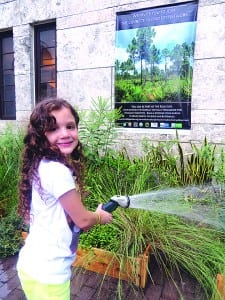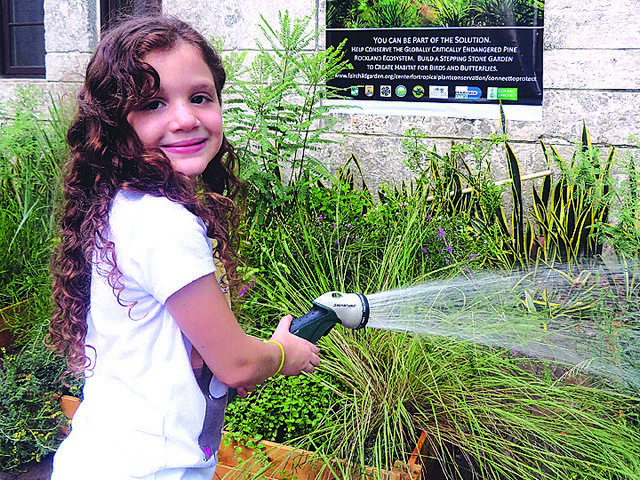
During August, in the public plaza of the Coral Gables Museum, visitors were able to encounter three garden beds filled with native plants from the endangered pine rockland habitat and a sign that read “Connect to Protect.”
The children at City Trekker Summer Camp at the Coral Gables Museum learned all about the native and endangered pine rocklands of South Florida. They visited the few remaining parks, including A.D. Barnes and Pinewood Cemetery, and watered the plants in the plaza that already have started to attract insects and birds.
Part of the Coral Gables Museum’s mission, which centralizes on the civic arts, addresses environmental preservation. So, it is appropriate that the final session of City Trekker Summer Camp at the Museum was titled “Natural Wonders.”
“We fully support the efforts of the Connect to Protect Network, and we want children to understand the importance of environmental preservation,” said Christine Rupp, museum director. “Coral Gables was once pine rockland, like most of pre-developed South Florida. In addition to teaching children about this endangered habitat through our summer camp program this year, we have also added an important new outreach program called ‘Coral Gables: A Changing Landscape’ in which our education staff will visit your location and provide an educational program that addresses the transformation of the land from pine rockland habitat to the Merrick Family’s citrus grove called the Coral Gables Plantation to a planned community known today as the City of Coral Gables.”
The program also will address current civic issues, such as how the City of Coral Gables is promoting the Connect to Protect Network’s efforts by planting more native plants and creating small pine rockland parks like Fewell Park, located on Coral Way and Granada.
For information on booking an outreach program, call the Coral Gables Museum at 305-603-8067 or send email to education@coralgablesmuseum.org.
Pine rockland is typically identified by an open canopy of slash pine (Pinus elliottii var. densa), a lower layer of both tropical and temperate shrubs and palms and a ground cover of grasses and herbs (FNAI, 1990). Situated in the subtropics, the pine rockland ecosystem has a rich diversity of temperate and tropical plants. This ecosystem contains over 400 native plant species — 31 of these species are endemic, meaning they’re found nowhere else in the world, five species are listed as federally endangered, and five species are candidates for listing.
Miami’s pine rocklands support the bald eagle, Kirtland’s warbler and the eastern indigo snake, as well as more common urbanadapted critters like foxes, raccoons, possums and squirrels. The rare and beautiful atala butterfly, Florida leafwing butterfly and rim rock crowned snake are occasionally glimpsed.






